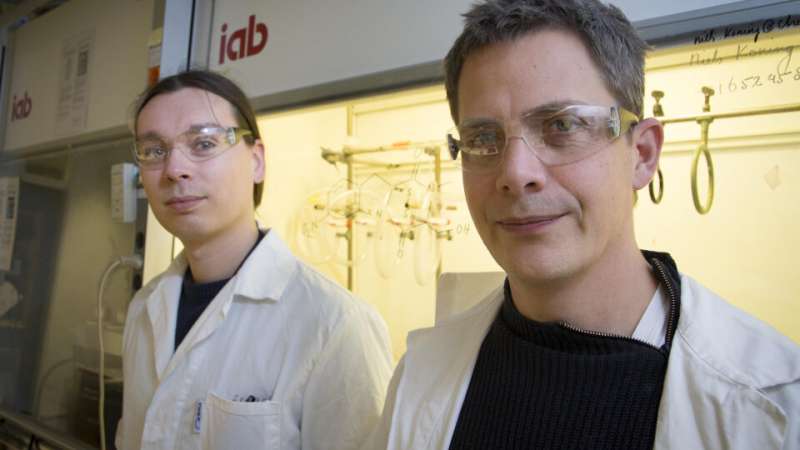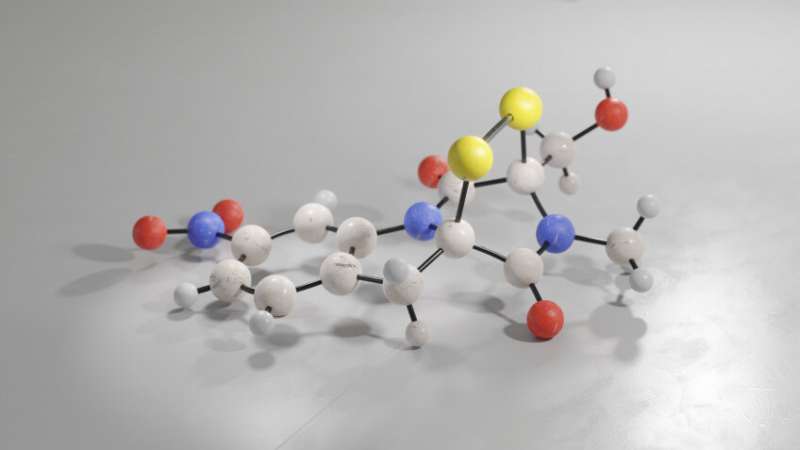Researchers crack the synthetic code of rare molecules sought after in drug development

A research team at Lund University in Sweden has succeeded in producing two molecules that are otherwise only formed by microorganisms from extremely contaminated wastewater in an abandoned mine in South Korea. The method, which took four years to develop, could pave the way for new types of drugs. The study is published in Journal of the American Chemical Society.
Glionitrin A and B are two molecules with properties that make them useful tools in drug development. However, researchers who want to use these molecules have faced an uphill battle for almost a decade.
Glionitrin A and B are natural products, and are produced by a fungus found in extremely contaminated acidic wastewater from an abandoned South Korean mine. Since the fungus only creates the molecules when triggered by specific bacteria from the same sewage, it has proved difficult to produce them by fermentation.
"We have been working on this problem for four years. Every time we thought we had a solution, the molecules revealed unexpected properties that sent us back to the drawing board," says Daniel Strand, chemistry researcher at Lund University.
Despite the complex nature of the problem, the solution proved to be both simpler and more effective than the researchers thought. By developing a new so-called asymmetric organocatalytic reaction, Daniel Strand and his colleagues succeeded in forging the most inaccessible parts of the molecules.

"Even when we thought the problem was finally solved, the molecule had one last surprise. It turned out that the real structure was the mirror image of what we initially thought was glionitrin A. So, all this time we and others had chased a molecule that was never there," says Daniel Strand.
Complex natural products with unique properties such as glionitrin A and B are important tools in drug development.
Glionitrin A has shown antibiotic properties against resistant bacteria, while glionitrin B makes cancer cells less prone to migrate. Being able to produce the molecules synthetically helps researchers not only understand how they work, but also improve their properties.
"There is a great need for new types of antibiotics, especially those that can contribute to the fight against resistant bacteria. We expect our results to inspire further developments in basic synthetic chemistry but also to be used in drug development," concludes Daniel Strand.
More information: Nicolas R. Koning et al, Total Synthesis of (−)-Glionitrin A and B Enabled by an Asymmetric Oxidative Sulfenylation of Triketopiperazines, Journal of the American Chemical Society (2021). DOI: 10.1021/jacs.1c10364
Journal information: Journal of the American Chemical Society
Provided by Lund University



















